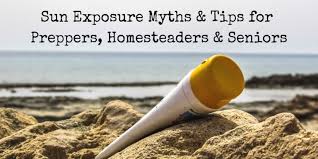
Breaking News
 NonConformist Series: Practical Wealth - Join us virtually Dec 29-30, 2025
NonConformist Series: Practical Wealth - Join us virtually Dec 29-30, 2025
 New bill would allow private citizens to fight cartels: 'WE ARE UNDER ATTACK'
New bill would allow private citizens to fight cartels: 'WE ARE UNDER ATTACK'
 Carnivore Got Me 90% There. This One Drink Changed Everything
Carnivore Got Me 90% There. This One Drink Changed Everything
Top Tech News
 Perfect Aircrete, Kitchen Ingredients.
Perfect Aircrete, Kitchen Ingredients.
 Futuristic pixel-raising display lets you feel what's onscreen
Futuristic pixel-raising display lets you feel what's onscreen
 Cutting-Edge Facility Generates Pure Water and Hydrogen Fuel from Seawater for Mere Pennies
Cutting-Edge Facility Generates Pure Water and Hydrogen Fuel from Seawater for Mere Pennies
 This tiny dev board is packed with features for ambitious makers
This tiny dev board is packed with features for ambitious makers
 Scientists Discover Gel to Regrow Tooth Enamel
Scientists Discover Gel to Regrow Tooth Enamel
 Vitamin C and Dandelion Root Killing Cancer Cells -- as Former CDC Director Calls for COVID-19...
Vitamin C and Dandelion Root Killing Cancer Cells -- as Former CDC Director Calls for COVID-19...
 Galactic Brain: US firm plans space-based data centers, power grid to challenge China
Galactic Brain: US firm plans space-based data centers, power grid to challenge China
 A microbial cleanup for glyphosate just earned a patent. Here's why that matters
A microbial cleanup for glyphosate just earned a patent. Here's why that matters
 Japan Breaks Internet Speed Record with 5 Million Times Faster Data Transfer
Japan Breaks Internet Speed Record with 5 Million Times Faster Data Transfer
Sun Exposure Myths & Tips for Preppers, Homesteaders & Seniors

This article will discuss some of the most common sun exposure and sunscreen myths. We'll get into how sun protection applies in particularly important ways for preppers and homesteaders. We'll also talk about tips for preventing sunscreen, and some sunscreen alternatives you can whip up in a pinch. Lastly, we'll discuss some special considerations when it comes to sun protection for seniors, disabled folks, and people with limited mobility. Let's dive right in with some myths to get started!
Myth 1: People with dark skin can't get sun damage
Melanin, which gives skin its dark color, does provide protection from the sun—but it doesn't make it impossible for the sun to damage the skin. Worse yet, darker skin makes it harder to identify when a sunburn is occurring, so olive and darker-complexioned people can be lulled into a false sense of security by thinking the damage isn't occurring.
Myth 2: Overcast skies and the winter season keep you from getting damaged
Unfortunately, sunburns and sun damage, in general, can still occur when the sky is overcast. Likewise, you can get sun damage during the winter. Sunscreen should be worn year-round.
Myth 3: Your skin isn't damaged until you get a sunburn.
The fact of the matter is, if you have a tan, your skin has been damaged. Tanning is a physical response to sun damage. So, even if you don't get burned, the "healthy tan" isn't so healthy after all. A tan is specifically a response to the skin cells becoming damaged.
Myth 4: You need to get sun exposure or you'll be Vitamin D deficient.
Thy myth is easy to fall prey to. Vitamin D is important, but incidental sun exposure usually keeps your body producing enough of it. Along with incidental exposure, foods like egg yolks give you all the vitamin D you need.
Myth 5: The more sun exposure, the more vitamin D you get.
Many sunbathers think "oof, I got a little sunburned. Well, at least I got my Vitamin D!" However, after about 20 minutes in direct sun, you actually begin having a negative effect in terms of what would have been the benefits from sun exposure. The window of sun exposure is very short before skin damage starts to occur.

 Aluminum Causes Brain Damage
Aluminum Causes Brain Damage Advanced Propulsion Resources Part 1 of 2
Advanced Propulsion Resources Part 1 of 2

